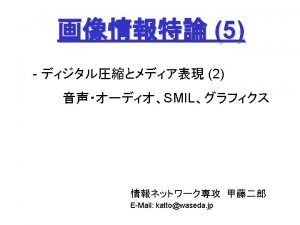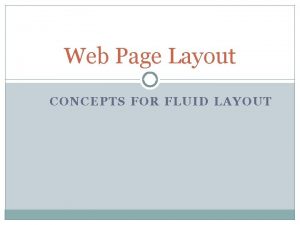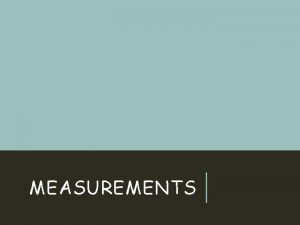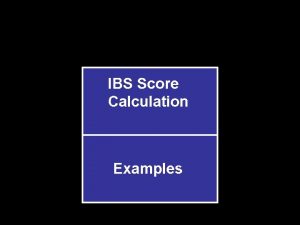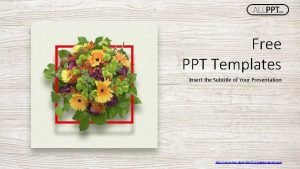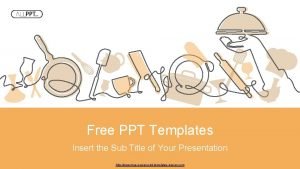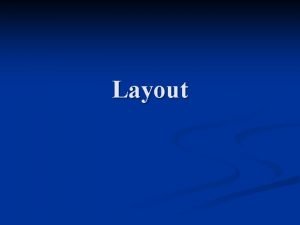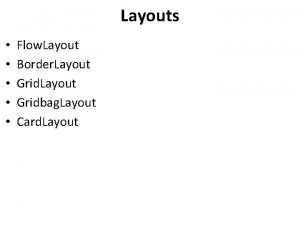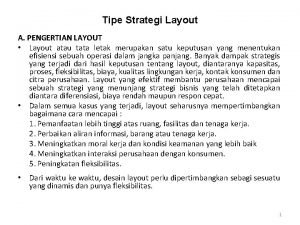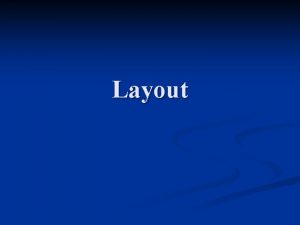Power Point Presentation Unit 9 Measuring and Layout
































- Slides: 32

Power. Point® Presentation Unit 9 Measuring and Layout Tools Tapes and Rules • Leveling and Plumbing Tools • Squaring Tools • Marking and Scribing Tools

Unit 9 — Measuring and Layout Tools A tape measure is used for many measuring and layout jobs.

Unit 9 — Measuring and Layout Tools Tape measures are available that show English measurement on one edge and metric measurement on the other edge.

Unit 9 — Measuring and Layout Tools A steel tape is used to measure long distances.

Unit 9 — Measuring and Layout Tools A plumb (vertical) line is always at a 90° angle to a level (horizontal) line.

Unit 9 — Measuring and Layout Tools Lightweight aluminum or magnesium carpenter’s levels are generally preferred over older wood types.

Unit 9 — Measuring and Layout Tools The center vial of a carpenter’s level is used for leveling. The end vials are used for plumbing. To ensure an accurate level reading, look straight into the vial and not at an angle.

Unit 9 — Measuring and Layout Tools A carpenter’s level should be periodically checked for accuracy.

Unit 9 — Measuring and Layout Tools The arm of a plate level can be extended to plumb a wall from the bottom plate to the top plate.

Unit 9 — Measuring and Layout Tools A straightedge consisting of a piece of 3/4″ plywood with blocks at the ends and a carpenter’s level is often used when leveling or plumbing over a long distance.

Unit 9 — Measuring and Layout Tools A laser hand level is used to transfer locations from one surface to another surface which is nearby.

Unit 9 — Measuring and Layout Tools A line level has hooks so that it can be attached to a tightly stretched string.

Unit 9 — Measuring and Layout Tools A water level is a convenient tool to use to determine a level location in another room or otherwise obstructed location. Water levels are based on the principle that water will find its own level in a system open to atmospheric pressure.

Unit 9 — Measuring and Layout Tools When using a plumb bob to plumb a wall, the distance between the line and the top of the wall is equal to the distance between the point of the plumb bob and the bottom of the wall.

Unit 9 — Measuring and Layout Tools Square cuts are required when framing walls and ceilings.

Unit 9 — Measuring and Layout Tools Trim pieces, such as this casing, are typically mitered at 45°.

Unit 9 — Measuring and Layout Tools A combination square is used to lay out 90° and 45° angles.

Unit 9 — Measuring and Layout Tools Set the combination square to the desired position and guide the head along the edge of a board while holding a pencil along the end of the blade.

Unit 9 — Measuring and Layout Tools The face of a framing square may include rafter and octagon tables.

Unit 9 — Measuring and Layout Tools The back of a framing square may include Essex board measure and brace measure tables.

Unit 9 — Measuring and Layout Tools Framing square applications include squaring a line across a wide board, marking a 45° angle across a wide board, and checking an inside corner for squareness.

Unit 9 — Measuring and Layout Tools The octagon table is used to shape squared lumber or timbers into an octagonal shape.

Unit 9 — Measuring and Layout Tools The protractor scale of a Speed® Square is used to lay out angles ranging from 0° to 90°. The common, hip, and valley scales are used to lay out the plumb and seat cuts for common, hip, and valley roof rafters.

Unit 9 — Measuring and Layout Tools A sliding T-bevel is used to transfer angles. The wing nut tightens the blade in place.

Unit 9 — Measuring and Layout Tools A try square is used to lay out 90° angles.

Unit 9 — Measuring and Layout Tools An angle divider is used to lay out miter cuts on molding for walls that meet at angles other than 90°. First, the angle divider is adjusted to fit the inside corner. Then it is used to mark the miter cut on the molding.

Unit 9 — Measuring and Layout Tools A scriber is used to mark a line when a close fit is required between the edge of a piece of material and an irregular surface.

Unit 9 — Measuring and Layout Tools Dividers are used to draw arcs and circles and can also be used as a scriber.

Unit 9 — Measuring and Layout Tools A scratch awl is used to start holes for wood screws or mark lines on materials that will not show a pencil line.

Unit 9 — Measuring and Layout Tools A center punch is used to mark holes to be drilled in hard wood or metal.

Unit 9 — Measuring and Layout Tools Square gauges are attached to a framing square to lay out angle cuts for roof rafters as well as tread and riser cuts for stair stringers.

Unit 9 — Measuring and Layout Tools A chalk line reel is used to snap straight lines on flat surfaces.
 Hindi presentation topics
Hindi presentation topics Power point presentation design west vancouver
Power point presentation design west vancouver Real power and reactive power
Real power and reactive power Power bi power point
Power bi power point Point point power
Point point power Unit 14.1 measuring and recording vital signs
Unit 14.1 measuring and recording vital signs Numerator vs denominator layout
Numerator vs denominator layout Smil head layout root-layout
Smil head layout root-layout Pcm512
Pcm512 Fixed vs fluid layout
Fixed vs fluid layout The starting point for measuring longitude
The starting point for measuring longitude Unit 6 review questions
Unit 6 review questions Sinciput presentation
Sinciput presentation Leopold maneuver
Leopold maneuver Si measurement for mass
Si measurement for mass Ms ibs
Ms ibs Allppt layout clean text slide for your presentation
Allppt layout clean text slide for your presentation Allppt layout clean text slide for your presentation
Allppt layout clean text slide for your presentation Allppt layout clean text slide for your presentation
Allppt layout clean text slide for your presentation Allppt layout clean text slide for your presentation
Allppt layout clean text slide for your presentation Allppt layout clean text slide for your presentation
Allppt layout clean text slide for your presentation Allppt layout clean text slide for your presentation
Allppt layout clean text slide for your presentation Ppt subtitle
Ppt subtitle Allppt layout clean text slide for your presentation
Allppt layout clean text slide for your presentation Allppt layout clean text slide for your presentation
Allppt layout clean text slide for your presentation Allppt layout clean text slide for your presentation
Allppt layout clean text slide for your presentation Change colors of image
Change colors of image Allppt layout clean text slide for your presentation
Allppt layout clean text slide for your presentation Allppt layout clean text slide for your presentation
Allppt layout clean text slide for your presentation Allppt layout clean text slide for your presentation
Allppt layout clean text slide for your presentation Tema ppt islamic free
Tema ppt islamic free Allppt layout clean text slide for your presentation
Allppt layout clean text slide for your presentation Allppt layout clean text slide for your presentation
Allppt layout clean text slide for your presentation








